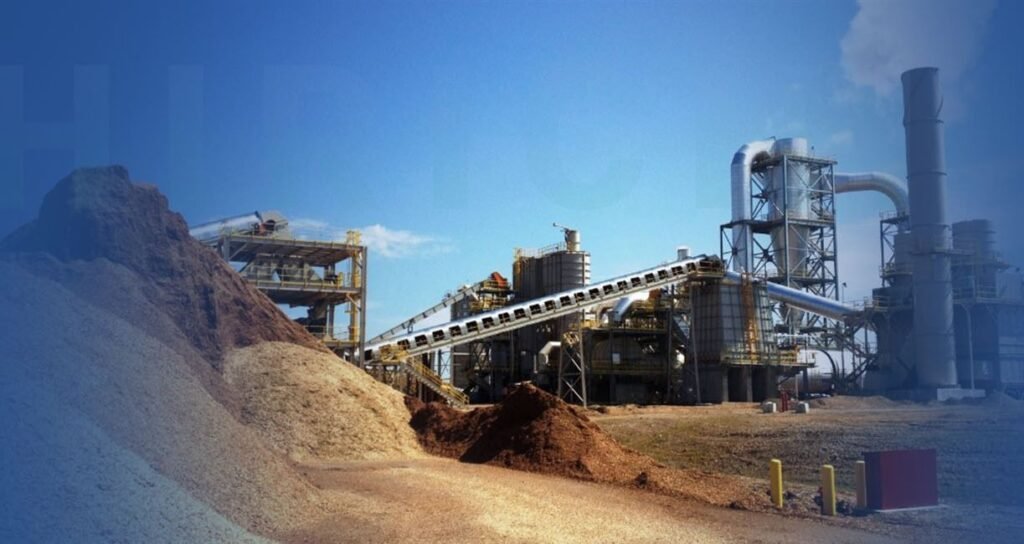Angola’s diverse landscape offers a variety of raw materials suitable for wood pellet production. As the nation seeks to diversify its economy and embrace renewable energy, establishing a wood pellet production line provides an opportunity to effectively utilize local resources. Below is an exploration of the various raw materials available in Angola for such a pellet production line project.
Forest Resources
- Eucalyptus
- Overview: Angola has significant eucalyptus plantations, primarily established for timber and pulp production.
- Advantages:
- Rapid growth rate
- High calorific value
- Relatively low ash content
- Potential: Eucalyptus residues from existing forestry operations could supply raw material for pellet production.
- Pine
- Overview: Pine plantations, though less common than eucalyptus, exist in certain regions of Angola.
- Advantages:
- Resin content aids in pellet binding
- Consistent burning properties
- Low moisture content when properly dried
- Native Hardwoods
- Overview: Angola’s natural forests host various hardwood species.
- Key Species:
- Mussivi (Guibourtia coleosperma)
- Girassonde (Pterocarpus angolensis)
- Muvuca (Julbernardia paniculata)
- Potential: Sustainably harvested wood and forestry residues could supplement pellet production, yielding high-quality, dense pellets with excellent burning characteristics.

Agricultural Residues
- Corn Stalks and Cobs
- Overview: Angola’s growing corn industry generates significant agricultural residues.
- Advantages:
- Seasonal availability aligned with harvest periods
- Good combustion properties when blended with wood materials
- Offers a solution for agricultural waste management
- Cassava Stems
- Overview: As a major cassava producer, Angola produces substantial cassava stem waste.
- Advantages:
- Year-round supply due to continuous cassava cultivation
- Adds value to an underutilized resource
- Coffee Husks
- Overview: Despite a smaller coffee industry, coffee husks remain a byproduct.
- Advantages:
- High energy content
- Opportunity to utilize agro-industrial waste
Industrial Byproducts
- Sawdust and Wood Shavings
- Overview: Angola’s timber industry generates sawdust and wood shavings.
- Advantages:
- Fine particle size requires minimal processing
- Availability near existing wood processing facilities
- Consistent quality and composition
- Furniture Manufacturing Waste
- Overview: The furniture manufacturing sector produces wood offcuts and sawdust.
- Advantages:
- Efficient use of wood resources
- Reduces waste in the wood processing industry
Dedicated Energy Crops
- Bamboo
- Potential: Bamboo cultivation could be introduced as a dedicated energy crop for pellet production.
- Advantages:
- Rapid growth rates
- High yield per hectare
- Can grow on marginal lands
- Switchgrass
- Potential: Switchgrass as an energy crop offers a sustainable biomass source for pellet production.
- Advantages:
- Drought resistance, suitable for Angola’s varied climate
- Low input requirements
- High biomass yield
Considerations for Raw Material Selection
- Availability and Supply Chain
- Assess the quantity and consistency of supply for each raw material.
- Consider seasonal variations in agricultural residues.
- Evaluate transportation infrastructure for moving raw materials to the production facility.
- Quality Characteristics
- Analyze moisture content, ash content, and calorific value.
- Consider pelletizing properties and blending needs to achieve desired pellet qualities.
- Sustainability
- Ensure sustainable harvesting practices to maintain long-term supply.
- Consider environmental impacts of collecting agricultural residues.
- Evaluate potential for establishing dedicated energy crop plantations.
- Economic Factors
- Compare costs of collecting and transporting different raw materials.
- Assess processing requirements for each material type.
- Consider market value of pellets produced from various raw materials.
- Local Regulations and Policies
- Understand restrictions on harvesting or using certain biomass resources.
- Explore government incentives for using specific types of biomass or waste materials.
- Community Impact
- Consider job creation potential in raw material collection and processing.
- Assess impacts on local agricultural and forestry practices.
Challenges and Opportunities
- Challenges
- Infrastructure Development: Improvements may be needed in transportation networks and storage facilities.
- Seasonal Variability: Strategies to manage seasonal availability of agricultural residues are crucial for year-round production.
- Competing Uses: Some biomass resources may have competing uses in local communities or other industries, requiring careful management.
- Quality Control: Robust quality control measures are essential for consistent, high-quality pellet production.
- Opportunities
- Economic Diversification: The wood pellet industry can contribute to Angola’s economic diversification.
- Waste Reduction: Utilizing agricultural and industrial byproducts can significantly reduce waste and environmental impact.
- Rural Development: Raw material collection and processing can create jobs in rural areas.
- Energy Security: Local wood pellet production enhances Angola’s energy security and reduces dependence on imported fuels.
Conclusion
Angola’s diverse array of potential raw materials—ranging from forest resources and agricultural residues to industrial byproducts and dedicated energy crops—presents significant opportunities for wood pellet production. By carefully selecting and managing these resources, a wood pellet production line in Angola can produce valuable renewable energy products while contributing to sustainable resource management, waste reduction, and rural economic development.
Developing a flexible production system that can adapt to seasonal availability and market demands is key to success. With proper planning and sustainable practices, Angola’s wood pellet industry can become a model for biomass utilization in Africa, supporting the country’s transition to cleaner energy sources while efficiently utilizing its natural resources.

